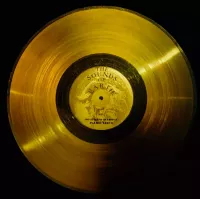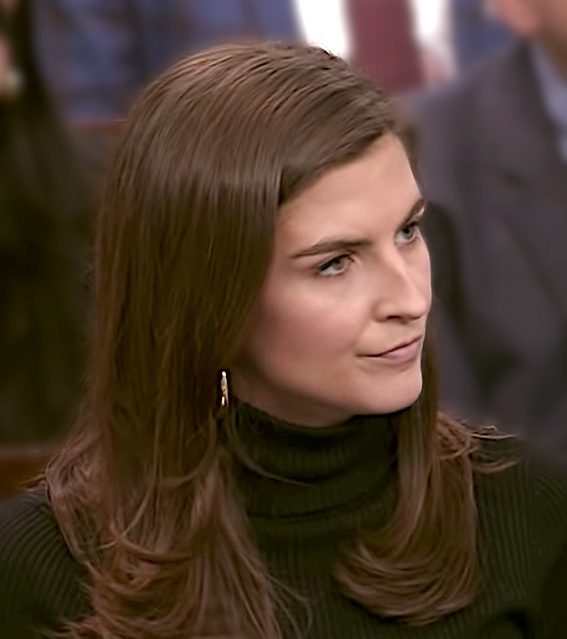"Ben-Hur" is a 1959 American epic film, a remake of the 1925 silent film, based on Lew Wallace's novel. Directed by William Wyler and starring Charlton Heston, the film follows Judah Ben-Hur, a Jewish prince falsely accused of treason by his Roman friend. Sentenced to slavery, Ben-Hur endures hardship and ultimately seeks revenge in a thrilling chariot race. The film was a massive critical and commercial success, winning a record-breaking 11 Academy Awards. "Ben-Hur" remains a cinematic landmark, celebrated for its epic scope, stunning visuals, and powerful performances.
1925: Release of the 1925 Silent Version
The 1925 silent film adaptation of "Ben-Hur" was originally released, serving as a precursor to the 1959 epic.
1925: Ramon Novarro, Star of 1925 "Ben-Hur," Attends 1959 Premiere
The 1959 premiere of "Ben-Hur" was attended by a star-studded guest list, including Ramon Novarro, who played the title role in the 1925 silent film version. His presence highlighted the legacy of the story and its cinematic adaptations.
1925: Release of the Original Ben-Hur
The original film adaptation of "Ben-Hur" was released in 1925.
1925: Homage to 1925 Silent Film in "Ben-Hur" Chariot Race
The pageantry sequence in the 1959 "Ben-Hur" chariot race, directed by William Wyler, was a shot-by-shot recreation of the corresponding sequence from the 1925 silent film adaptation, serving as both a tribute and an illustration of the evolution of filmmaking.
1925: Ben-Hur 1959 Script Diverges from Novel and 1925 Film
The screenplay for the 1959 Ben-Hur film, finalized in the late 1950s, incorporated significant deviations from Lew Wallace's novel and the 1925 silent film adaptation, particularly in character development and thematic emphasis.
1948: The Paramount Decision
The 1948 Paramount Decision, also known as the Hollywood Antitrust Case or the U.S. v. Paramount Pictures, Inc. case, was a landmark antitrust case brought against the major Hollywood studios.
1951: Set Reuse from Quo Vadis
To optimize production, several sets from the 1951 film "Quo Vadis" were reused in Ben-Hur, demonstrating a resourceful approach to filmmaking.
December 1952: MGM Announces Remake of Ben-Hur
In December 1952, Metro-Goldwyn-Mayer (MGM) made the initial announcement about remaking the 1925 silent film "Ben-Hur."
November 1953: Sam Zimbalist and Karl Tunberg Join Ben-Hur
MGM revealed in November 1953 that Sam Zimbalist will produce the movie and Karl Tunberg will write the screenplay.
1954: MGM Announces CinemaScope for Ben-Hur
MGM declared in 1954 that the "Ben-Hur" remake would be shot in CinemaScope.
September 1955: Production Plans for Ben-Hur Announced
Zimbalist announced a $7 million, six- to seven-month production for "Ben-Hur" scheduled to start in April 1956 in either Israel or Egypt.
April 1956: Production of Ben-Hur To Begin
The production of "Ben-Hur" was slated to begin in April 1956, utilizing MGM's innovative 65mm widescreen technology, MGM Camera 65.
1956: Release of The Ten Commandments
Paramount Pictures released the Biblical epic "The Ten Commandments" in 1956.
April 1957: William Wyler Begins Casting for Ben-Hur
William Wyler began conducting screen tests for "Ben-Hur" with Italian actors like Cesare Danova in April 1957 after MGM gave him the go-ahead to start casting.
August 1957: Location Scouting in Rome
MGM location scouts arrived in Rome in August 1957 to identify suitable locations for the film shoot.
September 1957: William Wyler Agrees to Direct Ben-Hur
William Wyler formally agreed to helm "Ben-Hur" in September 1957.
October 1957: Pre-production Begins in Rome
Pre-production for "Ben-Hur" commenced in October 1957 at Cinecittà Studios in Rome, Italy.
October 1957: Pre-production Begins at Cinecittà Studios
Pre-production for the film began at Cinecittà Studios around October 1957. This involved extensive work by the MGM Art Department, with thousands of sketches and drawings created for costumes, sets, and props.
November 1957: Construction of Miniatures Begins
By the end of November 1957, the construction of miniatures, crucial for scenes like the entrance of Quintus Arrius into Rome and the sea battle, was already underway.
November 1957: Preparations Begin for the Chariot Race Scene in "Ben-Hur"
In November 1957, preparations for the chariot race scene in "Ben-Hur" began. This included importing and training 78 horses from Yugoslavia and Sicily, constructing 18 chariots, and having the cast and stuntmen practice on the arena track.
December 1957: Filming the Sea Battle for Ben-Hur (1959)
In December 1957, the sea battle scene for the film "Ben-Hur" was filmed using miniatures in a tank on the MGM Studios lot and on an artificial lake at Cinecittà studios. The scene incorporated more than 40 miniature ships and two full-sized Roman galleys. The filmmakers went to great lengths to enhance the scene's realism, using a massive backdrop, Italian extras with missing limbs fitted with fake bone and blood, and process shots to blend the footage.
1957: Extensive Casting for Ben-Hur Begins in Rome
Casting for the epic film Ben-Hur commenced in Rome in mid-1957, involving a massive search for actors to portray a wide range of characters.
1957: Gore Vidal's Involvement in Ben-Hur
Gore Vidal was asked to write a version of the script for "Ben-Hur" in 1957 but declined and was put on suspension as a result of his choice.
1957: MGM Announces Remake of Ben-Hur
MGM studio head Joseph Vogel made the announcement in 1957 that the studio will proceed with a remake of "Ben-Hur."
January 3, 1958: William Wyler Confirmed as Director for Ben-Hur
MGM formally announced William Wyler's hiring as the director for "Ben-Hur" on January 3, 1958.
January 22, 1958: Charlton Heston Cast as Ben-Hur
Charlton Heston was officially chosen for the lead role in Ben-Hur on January 22, 1958, marking a significant moment in his career.
February 3, 1958: Final Images Captured
On February 3, 1958, the final images for the film were shot. This marked a significant milestone in the production process, bringing it closer to completion.
February 1958: Ben-Hur's Budget Increases
By February 1958, the budget for "Ben-Hur" had reportedly climbed to $10 million.
March 11, 1958: Libyan Filming Permit Revoked
Just a week before filming was set to begin, on March 11, 1958, the Libyan government revoked the production's permit due to religious concerns.
March 1958: Gore Vidal Joins Ben-Hur Script Team
In March 1958, Gore Vidal joined the Ben-Hur scriptwriting team in Rome to revise the existing drafts, aiming to refine the dialogue and historical accuracy of the film's script.
April 3, 1958: Sam Jaffe and Finlay Currie Join Ben-Hur Cast
On April 3, 1958, Sam Jaffe was cast as Simonides and Finlay Currie as Balthasar in the film Ben-Hur.
April 13, 1958: Stephen Boyd Cast as Messala
Stephen Boyd secured the role of Messala, the film's antagonist, on April 13, 1958, solidifying the central conflict in Ben-Hur.
May 1958: Christopher Fry Joins Ben-Hur as Screenwriter
Christopher Fry joined the Ben-Hur production in May 1958, working intensively on dialogue revisions and scene rewrites throughout the filming process.
May 1958: Debate Arises Over Homoerotic Subtext in Ben-Hur
In May 1958, discussions arose regarding a potential homoerotic subtext in a scene between Ben-Hur and Messala, with varying accounts from those involved.
May 1958: Filming of Ben-Hur Begins
Production on the movie "Ben-Hur" commenced in May 1958.
May 16, 1958: Haya Harareet Cast as Esther
On May 16, 1958, after a brief silent screen test, Haya Harareet, a relatively unknown Israeli actress, was chosen to play Esther. William Wyler, the director, was impressed by her personality and communication abilities when they met at the Cannes Film Festival.
May 18, 1958: Filming Begins on Ben-Hur
On May 18, 1958, principal photography commenced for the epic film "Ben-Hur."
June 6, 1958: Riot Erupts During Filming of the Chariot Race in "Ben-Hur"
On June 6, 1958, as filming for the chariot race scene in "Ben-Hur" was winding down, a riot broke out when over 3,000 people hoping for work were turned away from the set in Rome. The crowd, frustrated by the economic climate in Italy at the time, threw stones and rushed the gates before being dispersed by police, highlighting the social context in which the film was made.
June 8, 1958: Second Unit Filming Uncertainties
On June 8, 1958, The New York Times reported that second unit director Andrew Marton had been filming in the countryside. However, there's ambiguity about whether this took place and whether any filming happened in Israel, as planned. The American Film Institute suggests that the filming permit was revoked in Israel too due to religious reasons.
July 17, 1958: Martha Scott Joins Ben-Hur Cast
On July 17, 1958, Martha Scott was brought into the Ben-Hur cast to play the role of Miriam, replacing an actress who was let go.
November 1958: Dedicated Performances and Demanding Shoot
To ensure efficiency, Wyler often kept actors ready in full costume and make-up for any potential pick-up scenes. For instance, actresses Martha Scott and Cathy O'Donnell spent nearly the entire month of November 1958 in leprosy make-up and costumes for scenes that Wyler could shoot during downtime.
1958: Multiple Script Revisions for Ben-Hur
By the spring of 1958, more than 12 versions of the script for "Ben-Hur" had been penned by various writers.
January 7, 1959: Filming Wraps on Ben-Hur
On January 7, 1959, filming concluded for the movie "Ben-Hur," marking the end of principal photography.
January 1959: Filming of Ben-Hur Wraps
In January 1959, filming for "Ben-Hur" concluded.
March 1959: Vidal's Script Contributions Revealed
In March 1959, details of Gore Vidal's contributions to the Ben-Hur script, including dialogue revisions and structural changes, were revealed in an interview.
November 18, 1959: Premiere of Ben-Hur
On November 18, 1959, "Ben-Hur" had its world premiere at Loew's State Theatre in New York City.
December 1959: Dilys Powell's Review in the London Sunday Times
In December 1959, renowned British film critic Dilys Powell published her review of "Ben-Hur" in the London Sunday Times, expressing a mix of praise and reservations.
1959: "Ben-Hur" Sees Massive Marketing Campaign and Merchandise Blitz
A massive marketing campaign for "Ben-Hur" launched in 1959, including a dedicated research department, high school study guides, and a nationwide impact survey. The film's popularity was capitalized on with a wave of merchandise, including toys, clothing, and even "Ben-Her" towels.
1959: Release of Ben-Hur
In 1959, the American religious epic film "Ben-Hur" was released, directed by William Wyler and starring Charlton Heston.
1959: Miklós Rózsa's "Ben-Hur" Score Makes History with Multi-Record Release and Separate Album
Miklós Rózsa's iconic score for "Ben-Hur" was released in 1959 as a three-LP album due to its length, marking the first time a film score had been issued in its entirety. Additionally, a single-LP version and a "Ben-Hur Suite" were released, making it the first film score to also have a separate album release.
1959: Initial Release and Box Office Success
Upon its release in 1959, "Ben-Hur" achieved remarkable box office success, earning $33.6 million in North American rentals and becoming the highest-grossing film of the year.
March 1960: Special Technical Oscar for Camera 65
MGM and Panavision were jointly awarded a special technical Oscar in March 1960 for their development of the innovative Camera 65 photographic process, which was used in "Ben-Hur".
1960: "Ben-Hur" Merchandise Continues to Thrive
The merchandising momentum for "Ben-Hur" extended into 1960, highlighting the film's lasting cultural impact. Products ranging from candy to children's toys to perfume continued to be popular with consumers, demonstrating the film's success in capturing the public imagination.
1964: Gore Vidal Publishes "Julian"
In 1964, Gore Vidal published his historical novel, "Julian," which he had been researching during his time working on the Ben-Hur script.
1967: Rózsa's "Ben-Hur" Score Re-recorded by Nuremberg Symphony Orchestra
Miklós Rózsa's acclaimed "Ben-Hur" score was re-recorded by the Nuremberg Symphony Orchestra and released on Capitol Records in 1967, introducing the epic music to a new generation.
1967: Establishment of the American Film Institute
The American Film Institute (AFI), an independent non-profit organization dedicated to film preservation and education, was established in 1967.
1969: Re-release and Continued Success
In 1969, "Ben-Hur" was re-released, further solidifying its legacy and generating an additional $10.1 million in profits.
February 14, 1971: First Television Broadcast
On February 14, 1971, "Ben-Hur" made its television debut, airing on CBS in a groundbreaking five-hour broadcast that preempted the network's regular programming.
1977: UK's National Philharmonic Orchestra and Chorus Release Tracks from Rózsa's "Ben-Hur" Score
In 1977, the United Kingdom's National Philharmonic Orchestra and Chorus released their renditions of several tracks from Miklós Rózsa's "Ben-Hur" score under the Decca Records label, further solidifying the music's enduring appeal.
1989: Theatrical Rental Earnings
By 1989, "Ben-Hur" had amassed an impressive $90 million in worldwide theatrical rentals, highlighting its enduring popularity.
1991: Sony Music Reissues Rózsa's "Ben-Hur" Score as Two-CD Set
Sony Music reintroduced Miklós Rózsa's epic "Ben-Hur" score to a new audience in 1991 with a comprehensive two-CD set.
1993: Laserdisc Release with Making-of Documentary
A laserdisc version of "Ben-Hur" was released in 1993, notably featuring a making-of documentary that was later included in subsequent DVD releases.
1995: Vidal Sparks Controversy with Ben-Hur Claims
In 1995, Gore Vidal ignited controversy by claiming in the documentary "The Celluloid Closet" that he introduced a homoerotic subtext to the Ben-Hur script, sparking debate about his role and the scene's interpretation.
1996: Screenplay Credit Dispute for Ben-Hur
A public disagreement over screenplay credits for Ben-Hur emerged in 1996, involving multiple writers and highlighting the complexities of collaborative filmmaking.
1998: "Titanic" Matches Academy Award Wins
In 1998, James Cameron's "Titanic" equaled "Ben-Hur's" record of 11 Academy Award wins.
1998: Ben-Hur Recognized by AFI
The American Film Institute (AFI) recognized "Ben-Hur" as the 72nd best American film and the 2nd best American epic film in 1998.
March 13, 2001: Widescreen DVD Release
On March 13, 2001, a two-sided single-disc widescreen DVD edition of "Ben-Hur" was released in the United States, featuring bonus content such as a commentary by Charlton Heston and a making-of documentary.
2002: Deluxe Edition Box Set
In 2002, a deluxe edition box set of "Ben-Hur" was released, containing memorabilia such as lobby card reprints, stills with reproduced autographs, a framed color image, and a large reproduction poster.
2004: National Film Registry Preservation
In 2004, "Ben-Hur" was selected for preservation by the National Film Registry of the Library of Congress for its cultural, historical, and aesthetic significance.
2004: "The Lord of the Rings: The Return of the King" Matches Academy Award Wins
In 2004, "The Lord of the Rings: The Return of the King" joined "Ben-Hur" and "Titanic" as the only films to receive 11 Academy Awards.
2004: Ben-Hur Selected for Preservation
The National Film Preservation Board chose "Ben-Hur" in 2004 to be kept in the Library of Congress's National Film Registry because of its cultural, historical, and aesthetic value.
September 13, 2005: Four-Disc DVD Release
September 13, 2005, saw the release of a comprehensive four-disc DVD edition of "Ben-Hur", including remastered audio and video, additional commentaries and featurettes, and the complete 1925 silent version of the film.
2011: 50th Anniversary Blu-ray and DVD Release
To commemorate its 50th anniversary, "Ben-Hur" was released on Blu-ray Disc and DVD in 2011, marking the first home video release to present the film in its original aspect ratio.
2012: Film Score Monthly WaterTower Music Issues Limited Edition Five-CD Set of "Ben-Hur" Music
Film Score Monthly WaterTower Music released a comprehensive five-CD set of music from "Ben-Hur" in 2012, showcasing the score's depth and variety. The limited-edition release was a testament to the score's enduring legacy.
2017: Tadlow Music Releases Complete "Ben-Hur" Score Performed by The City of Prague Philharmonic Orchestra and Chorus
In 2017, Tadlow Music released a two-CD set featuring the complete "Ben-Hur" score as performed by The City of Prague Philharmonic Orchestra and Chorus, offering listeners a fresh perspective on the beloved music.
2021: "Zack Snyder's Justice League" Surpasses "Ben-Hur"'s Score Length
In 2021, the film score for "Zack Snyder's Justice League," with a runtime of nearly four hours, officially became the longest film score ever composed, surpassing Miklós Rózsa's score for "Ben-Hur," which held the record for over six decades.
2023: Unprecedented Academy Award Wins
As of 2023, "Ben-Hur" still holds the record for most Academy Award wins for a single film, tied with "Titanic" (1998) and "The Lord of the Rings: The Return of the King" (2004).
Mentioned in this timeline
CBS Broadcasting Inc CBS is a prominent American commercial broadcast...

Sony is a Japanese multinational conglomerate based in Tokyo Its...
Africa is the second-largest and second-most populous continent comprising of...

A tank is an armored fighting vehicle designed for front-line...
Sicily the largest and most populous Mediterranean island is an...

Music is a cultural universal involving the arrangement of sound...
Trending

9 months ago Kevin Kiley faces constituent pressure, hosts virtual town hall after criticism.

2 months ago Rachel McAdams and Dylan O'Brien stranded in Sam Raimi's island horror-thriller Send Help.
16 days ago Winter Weather Advisory: Freezing Rain and Icy Roads Expected in North Carolina

2 months ago Kaitlan Collins Praises Karoline Leavitt; CNN to Host AOC and Sanders Town Hall

2 months ago Investors Await Jerome Powell's Analysis on Inflation and Jobs Impacting Wall Street.

6 months ago GOP Lawmakers Unveil 'Golden Dome' Defense Plan: Katie Britt's Role Highlighted
Popular

Candace Owens is an American conservative political commentator and author...

Ilhan Omar is an American politician currently serving as the...

XXXTentacion born Jahseh Dwayne Ricardo Onfroy was a controversial yet...

Tucker Carlson is an American conservative political commentator known for...

Charles James Charlie Kirk was a prominent American right-wing political...

Bill Gates an American businessman and philanthropist revolutionized personal computing...
